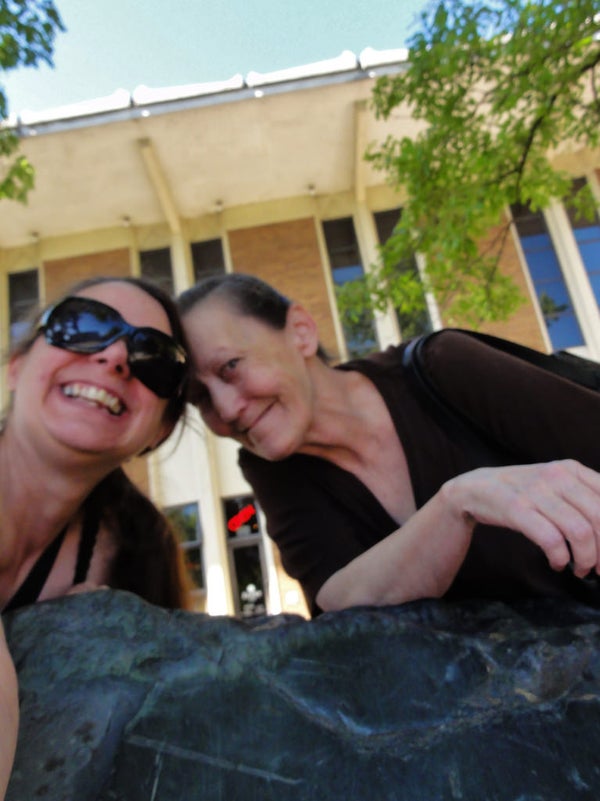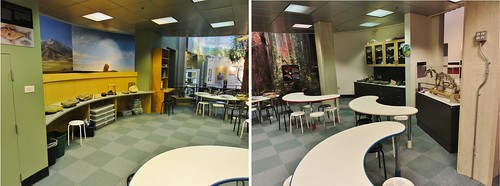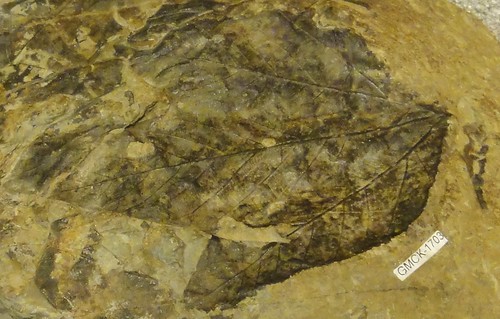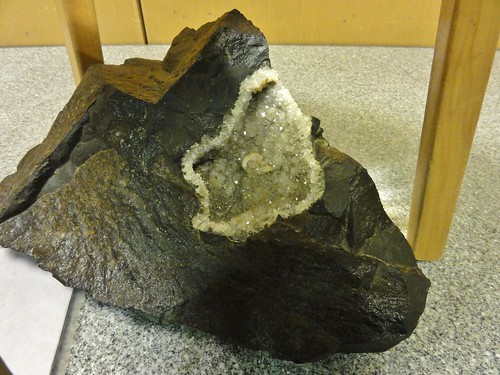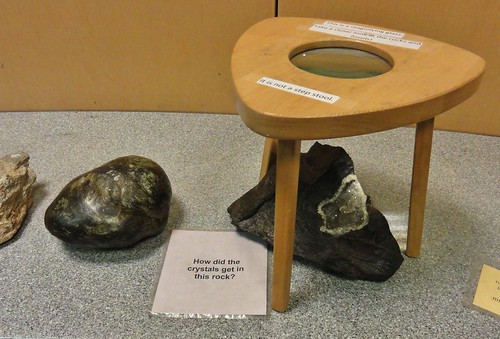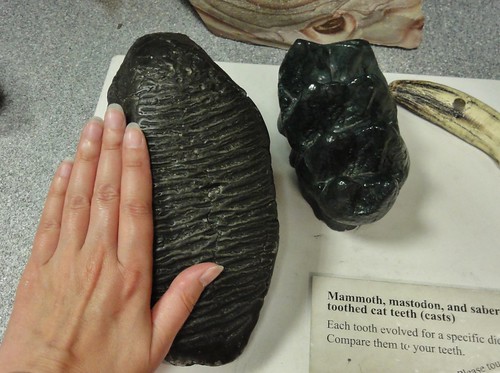This article was published in Scientific American’s former blog network and reflects the views of the author, not necessarily those of Scientific American
Before we get started on the next leg of our Burke Museum visit, I've got to announce exciting news: we got a GINORMOUS T-rex skull! And it's a rare, nearly complete one! It'll be on display in its plaster cast through October 2nd, and then it'll be behind the scenes for cleaning until 2019, so hie thee down to the Burke ASAP to view it.
So. Things got a little explosive the last time we visited the Burke Museum, didn't they? Let's cool it down and chill with some hands-on geology. The Burke has a fantabulous section for the kids called the Discovery Room. If it's not in use, you're welcome to go handle the specimens and see if you can solve a few puzzles. You'll even get a chance to solve one in this very post!
On supporting science journalism
If you're enjoying this article, consider supporting our award-winning journalism by subscribing. By purchasing a subscription you are helping to ensure the future of impactful stories about the discoveries and ideas shaping our world today.
Step into the well-lighted area with the adorable dinosaur clock and the tables fit for wee humans, and you'll find counters full of fascinating rocks and fossils. This leaf fossil is just lovely - look at the veins!
I'm sure there's a little laminated card that tells you which plant this came from, but I was in a hurry to get to the shinier rocks. You know me. And there was this bit of basalt with a lovely crystal-filled cavity, and I just had to go drool over it.
There are many more intriguing rocks, and a magnifier on a tripod, and little informational placards telling you all about them.
This is fantastic for kids (and adults who never actually grew up, not that I'd know what that's like or anything). Getting hands-on is a magnificent way to learn. And with geology, getting your hands on the rocks is pretty much the only way to learn. If you've ever tried to get a geologist to identify a rock from a photo alone, you'll know what I'm talking about.
So. Speaking of identifying rocks from photos, here's your chance to try your hand at it! This is a pretty easy one. Ready?
Here's a close-up for your inspection. Click on any of the larger sizes to enlarge it. I know you can't touch it, so I'll describe it: it feels like flint or chert, so you know it has a lot of silica in it. The white center is a bit chalky, but doesn't come off when you rub it like chalk would. The layers all look like individual layers, but that could be the way it's weathered.
Okay, got your answer? Click on through to En Tequila Es Verdad and enter the password Reveal to find out if you're right!
Whether you were right or wrong, you got the gold. See? It's got actual gold in it!
It's nothing we could get rich from, but it sure is pretty!
Getting back to fossils, there are some really fantastic teeth you can get your hands on. There's a mammoth, mastodon, and saber tooth!
Click here to see the full saber. You can get an idea how huge it is just from comparing it to the ginormous teeth beside it. You wouldn't ever want to get bitten by that cat!
Speaking of, here's one of those lovely felids right here.
This one's a wee little thing compared to some, but you know what? I still wouldn't want to make it mad. I've suffered enough from the wrath of my house kitty's fangs (she's Bitey McBiterson, lemme tell ya). I can only imagine how it would feel to get chomped by one of these kitties!
There's a lot more neato stuff in the Discovery Room, but it's mostly in cabinets. If you've got a class full of kids, schedule a trip to the Burke Museum and reserve time in that room! They'll learn so much science and they will love it immensely.
Next: we'll shiver our way through Washington's Ice Age!
